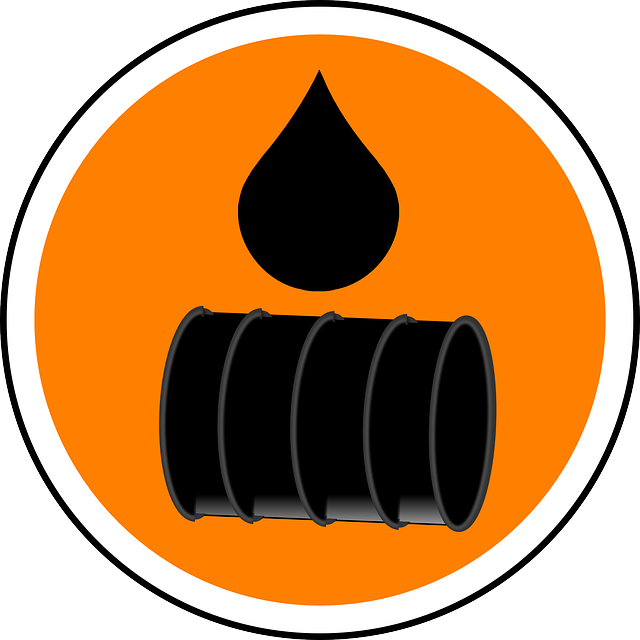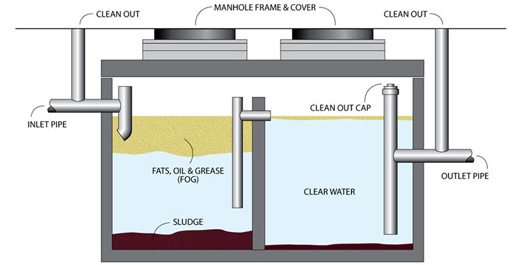Leading Industrial Wastewater Treatment Solutions: Guaranteeing Conformity and Performance
Leading Industrial Wastewater Treatment Solutions: Guaranteeing Conformity and Performance
Blog Article
Exactly How Liquid Waste Disposal Works: An In-depth Review of Techniques and Technologies Utilized

Overview of Liquid Waste Types
The intricacy of liquid waste kinds necessitates a detailed understanding of their features and ramifications for disposal. Liquid waste can extensively be classified into several kinds, including commercial, metropolitan, farming, and contaminated materials. Each classification displays unique buildings, calling for particular administration methods to mitigate ecological and wellness risks.
Industrial liquid waste stems from making processes and usually contains a series of pollutants, such as heavy steels, solvents, and natural compounds. Community liquid waste, mainly comprising wastewater from families and business establishments, has natural matter, nutrients, and microorganisms (industrial wastewater treatment). Agricultural fluid waste, including drainage from farms, might have plant foods, chemicals, and animal waste, presenting dangers to water top quality and communities
Hazardous fluid waste is defined by its toxicity, reactivity, or potential to cause damage. This category includes compounds like acids, bases, and particular chemicals that require rigid handling and disposal methods. Comprehending these diverse fluid waste types is vital for creating reliable disposal techniques and making sure conformity with ecological policies. Correct category and characterization are vital for implementing suitable therapy strategies and minimizing the adverse effect on public health and the setting.
Physical Treatment Approaches

Screening is the preliminary step, where larger bits and particles are gotten rid of from the liquid waste utilizing screens or grates. In sedimentation tanks, heavier fragments settle at the base, creating a sludge layer, while the clarified liquid can be additional dealt with.
Filtration is another important method that includes passing the fluid via permeable products, such as sand or membrane layers, to catch smaller bits. This step enhances the top quality of the liquid, making it suitable for succeeding therapy procedures.

Chemical Treatment Techniques
Chemical treatment techniques are vital for effectively managing fluid waste, especially in attending to dissolved and colloidal contaminants that physical techniques may not effectively get rid of. These strategies make use of various chemical representatives to neutralize, speed up, or change dangerous compounds right into much less hazardous types.
One usual method is coagulation and flocculation, where chemicals such as alum or ferric chloride are included to promote the aggregation of suspended particles. This process enhances sedimentation, allowing for much easier removal of the resulting sludge. Furthermore, oxidation procedures, using representatives like chlorine or ozone, are used to break down complicated natural substances and pathogens, rendering the waste much safer for discharge or further therapy.
Neutralization is another vital method, which changes the pH of acidic or alkaline waste streams to neutral levels, avoiding potential injury to downstream systems and the setting. Additionally, advanced oxidation procedures (AOPs) use combinations of oxidants and ultraviolet light to weaken consistent contaminants, attaining a higher level of treatment effectiveness.
Biological Treatment Processes
Biological therapy processes play an important function in the monitoring of liquid waste by making use of microbes to decay natural issue and reduce pollutant levels. These processes can be extensively categorized right into anaerobic and aerobic therapies, each employing certain microbial neighborhoods to achieve efficient waste degradation.
Cardio treatment involves using oxygen to promote the breakdown of natural products by germs. This procedure is typically implemented in activated sludge systems, where aeration tanks offer a conducive setting for microbial growth, leading to the oxidation of organic pollutants. The resultant biomass can be divided from dealt with effluent via sedimentation.
In comparison, anaerobic therapy occurs in the lack of oxygen, counting on different germs to break down natural matter. This method is particularly beneficial for high-strength visit this site right here waste, as it creates biogas, a renewable resource source, while minimizing sludge production. Technologies such as anaerobic digesters are regularly utilized in municipal and commercial applications.
Both cardiovascular and anaerobic organic therapies not only lessen the ecological impact of liquid waste but also assist in resource recuperation, making them vital parts of lasting waste management methods. Their efficiency, versatility, and effectiveness sustain their widespread application across various fields.
Arising Technologies in Disposal
Innovative strategies to liquid garbage disposal are quickly advancing, driven by developments in modern technology and a boosting focus on sustainability. Among these arising innovations, membrane bioreactors (MBRs) have acquired grip for their capability to incorporate biological therapy with membrane layer filtering, resulting in top notch effluent that can be recycled in different applications. MBRs allow smaller sized impacts and a lot more reliable procedures contrasted to standard systems.
Another encouraging advancement is using anaerobic digestion incorporated with nutrient recuperation modern technologies, which not only deals with liquid waste yet additionally generates biogas and recoups beneficial nutrients like nitrogen and phosphorus. This double benefit boosts source performance and decreases ecological impact.
In addition, advanced oxidation processes (AOPs) are being embraced for the degradation of complex natural toxins. These techniques make use of effective oxidants and drivers to break down pollutants at the molecular level, using a very reliable service for tough waste streams.
In addition, the combination of expert system and device learning in waste administration systems is enhancing functional efficiency and anticipating upkeep, causing decreased costs and boosted ecological conformity. These technologies reflect a significant shift towards even more sustainable and reliable fluid waste disposal techniques.
Final Thought
In conclusion, reliable liquid waste disposal necessitates an extensive understanding of various methods and innovations. By continually progressing these methods, it this page becomes possible to address the expanding obstacles linked with fluid waste, ultimately contributing to ecological protection and source recovery.
Liquid waste disposal is an important facet of environmental management, needing a detailed understanding of various methods and modern technologies tailored to various waste types. Web Site Liquid waste can extensively be classified into numerous types, including industrial, municipal, agricultural, and harmful waste. Agricultural liquid waste, including drainage from ranches, may have fertilizers, chemicals, and pet waste, positioning threats to water top quality and ecosystems.
Numerous physical therapy approaches play an important role in managing fluid waste successfully - industrial wastewater treatment.In conclusion, effective fluid waste disposal requires an extensive understanding of numerous methods and technologies
Report this page